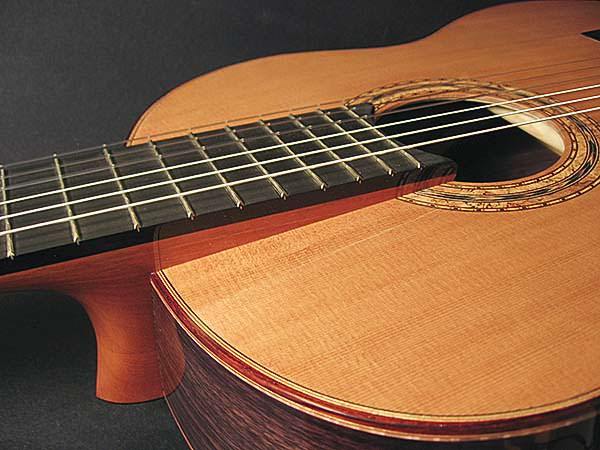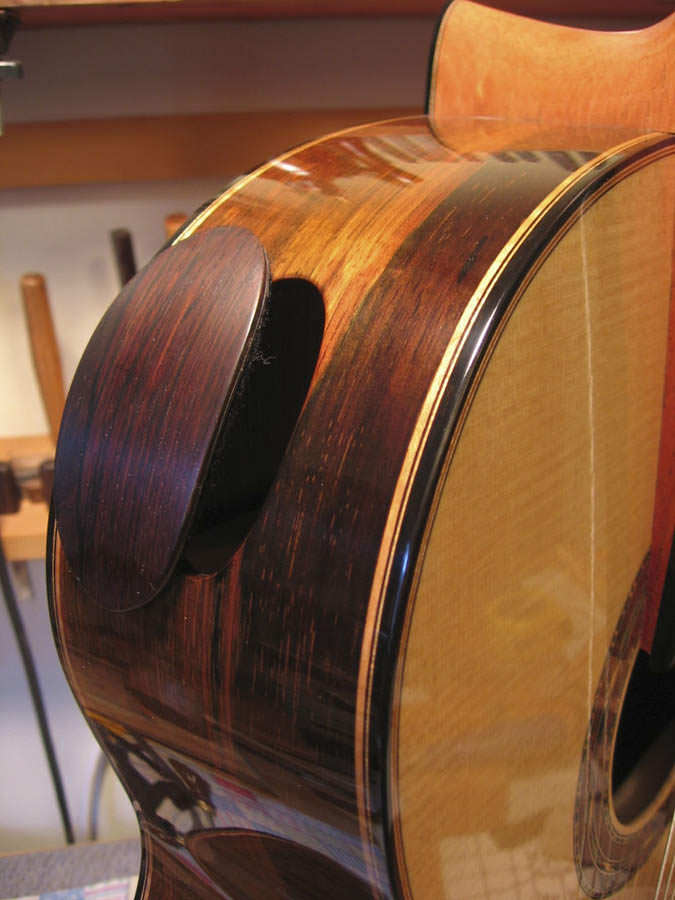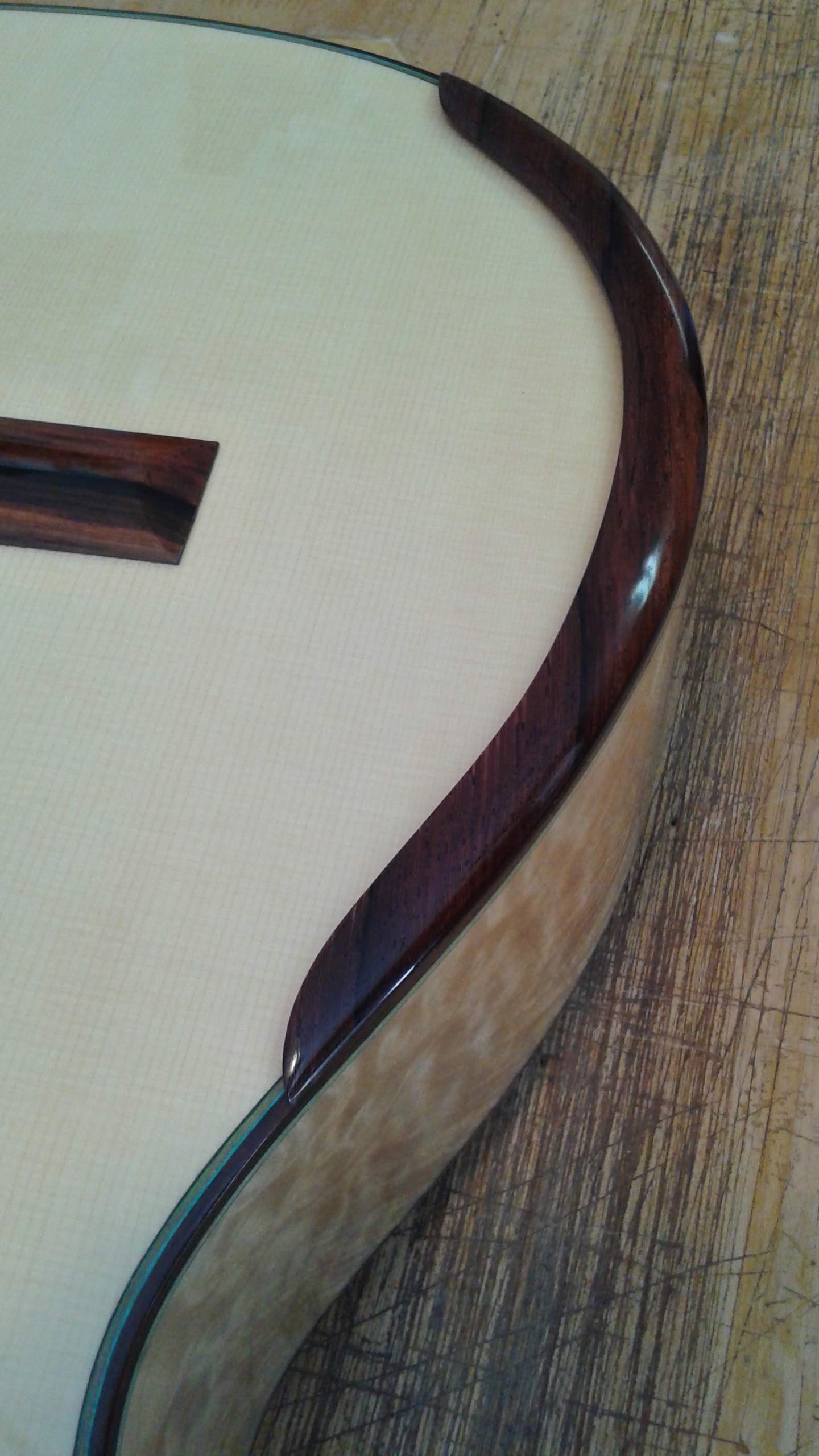Options
Many options are available for your Dominelli Guitar, but here are some of the more common ones I offer.Elevated Fingerboard
The top of the fingerboard is a full 20mm above the soundboard at the 12th fret. This greatly facilitates playing the area of the register above the 12th fret. After playing one you'll wonder why any guitars are still made the old way! On my guitars, the neck wood is one continuous piece right to the soundhole—no butt jointed wedge from the 12th fret to the soundhole like you might see on other guitars. This makes the neck stronger, aesthetically nicer, and repair friendly.
Also, because of the extra mass under the fingerboard in this area, the notes tend to have better sustain than with a traditional non-elevated fingerboard. I am very convinced of the superiority of elevated fingerboards, not just for ease of playability and sound, but for the longevity of the guitar. Altering the neck projection, if it's ever needed, is far easier with this kind of construction than it is for guitars made with traditional Spanish style construction.
Over 95% of my clients want this feature, so as of 2014 it has been included in the base price.

Soundport
Soundports help the player hear the guitar, obviously. This can be useful in ensemble situations, on stage, or if the player simply wants to hear more of the guitar.
Good concert guitars are built to project the sound outward. This can compromise the “near field” sound. Soundports can help compensate for any near field weakness by giving some sound control back to the player. It's like having a mini monitoring speaker on the side of the guitar.
I decided to make my soundports available with a magnetically fitting cover, so that the player can fine tune the amount of sound coming out. Fully open, ports can sometimes be too loud or distracting to the player, so it’s nice to be able to fine tune the sound by sliding it to the desired opening. This photo shows the port half covered.

Armrest
An elevated style armrest has three advantages. First, it helps keep the right arm from muting soundboard vibrations. Second, it protects the French polish from slowly getting worn away by the right arm. And thirdly, it is a smooth, comfortable place to rest the arm.
Some of my clients have asked about the "Bevel Style" armrest, you often see on steel-string guitars. There are a couple of reasons why I do not use it on my guitars. It solves the problem of comfort, but it does not address the other two issues - preventing soundboard damping by the right arm, or protecting the finish. For these reasons, I use the elevated style armest.
I’ve been making them out of African blackwood, cocobolo, walnut, ebony, maple, and other woods, depending on the look I'm after, and the binding I use. So you can see from the pictures how the armrest allows the arm to sit above the soundboard, without dampening the soundboard:



Scale Length and Body Size
I offer two body sizes for my concert guitars. A standard/large body size is available with 650mm or 640mm scale length, and a slightly smaller size, which is available with 640mm or 630mm scale length.
I occasionally make even shorter scale guitars with even smaller body size as a custom order.
Nut Width
The standard nut width is 52mm. I can do whatever nut width you need. 51mm and 50mm are common, especially for the shorter scale guitars.
20th Fret
I get plenty of requests for a 20th fret, and occasionally for more.
